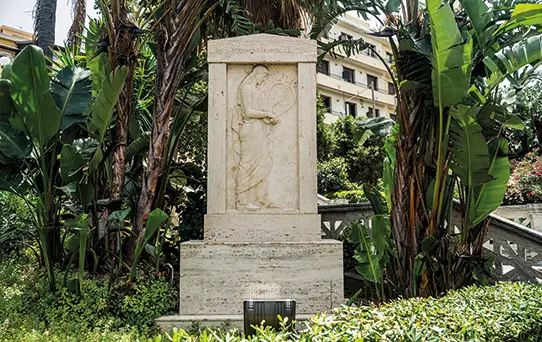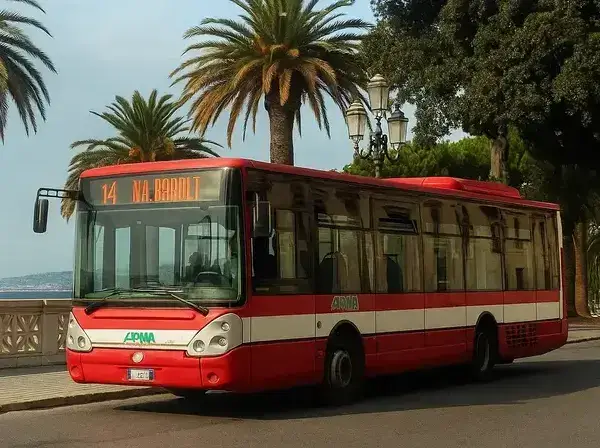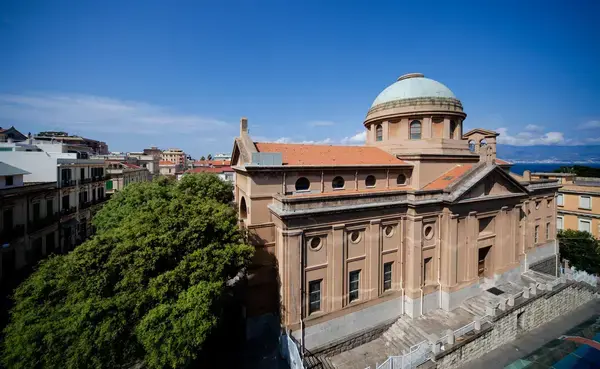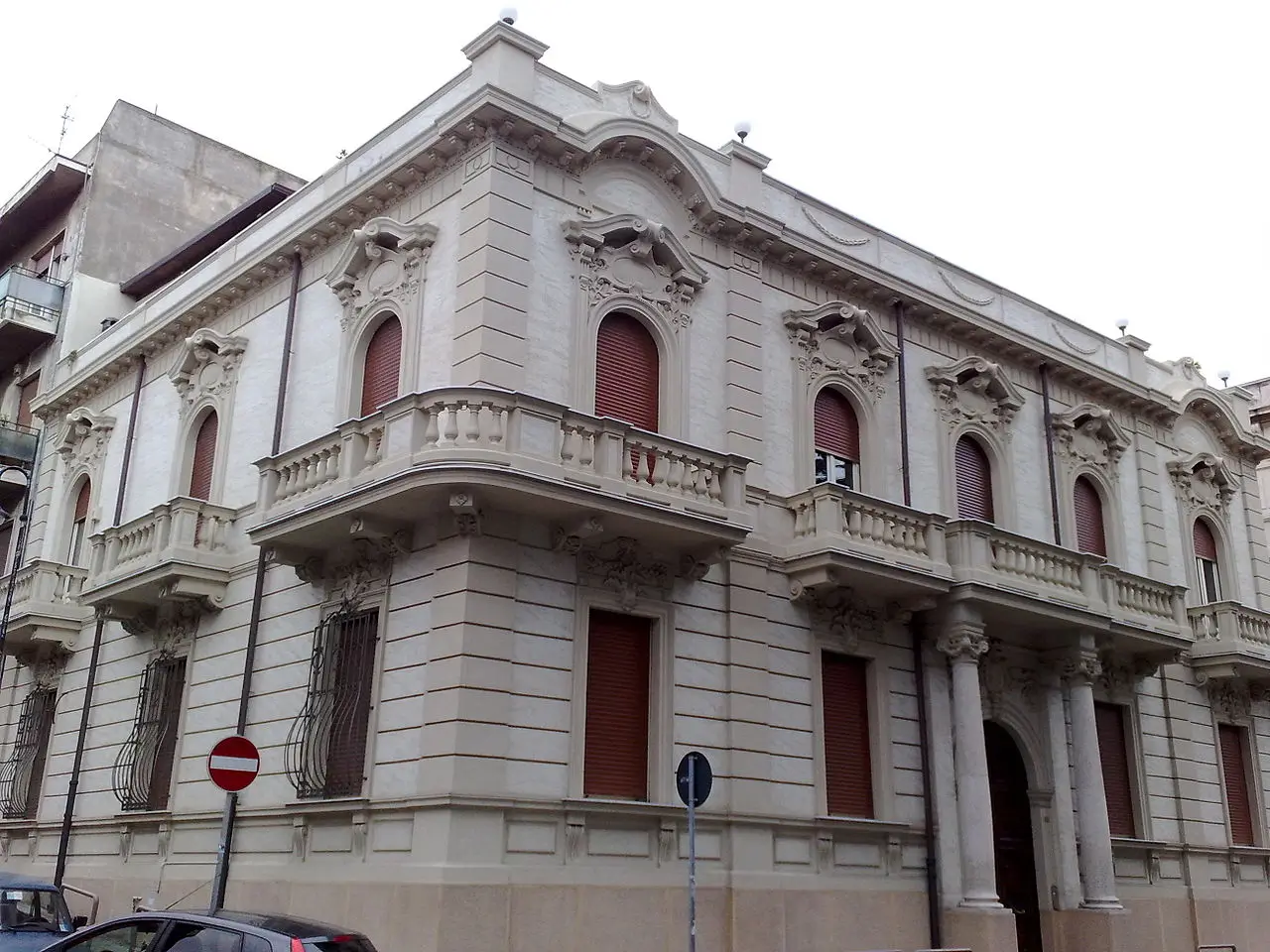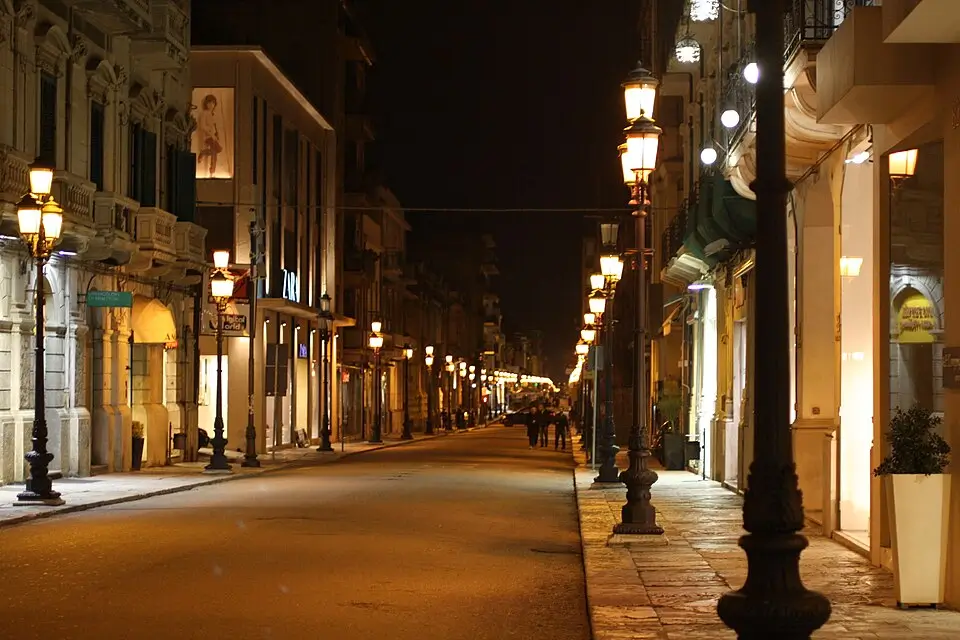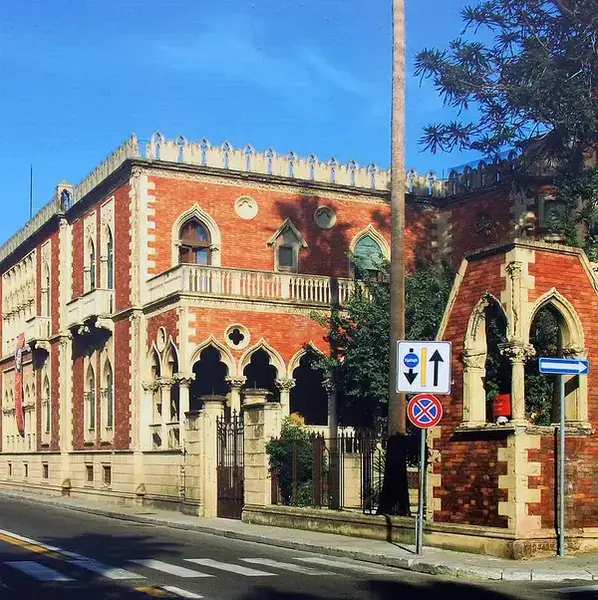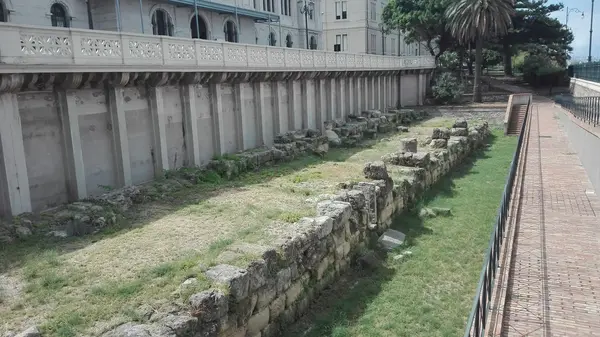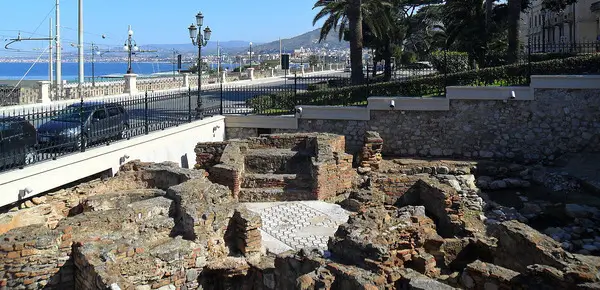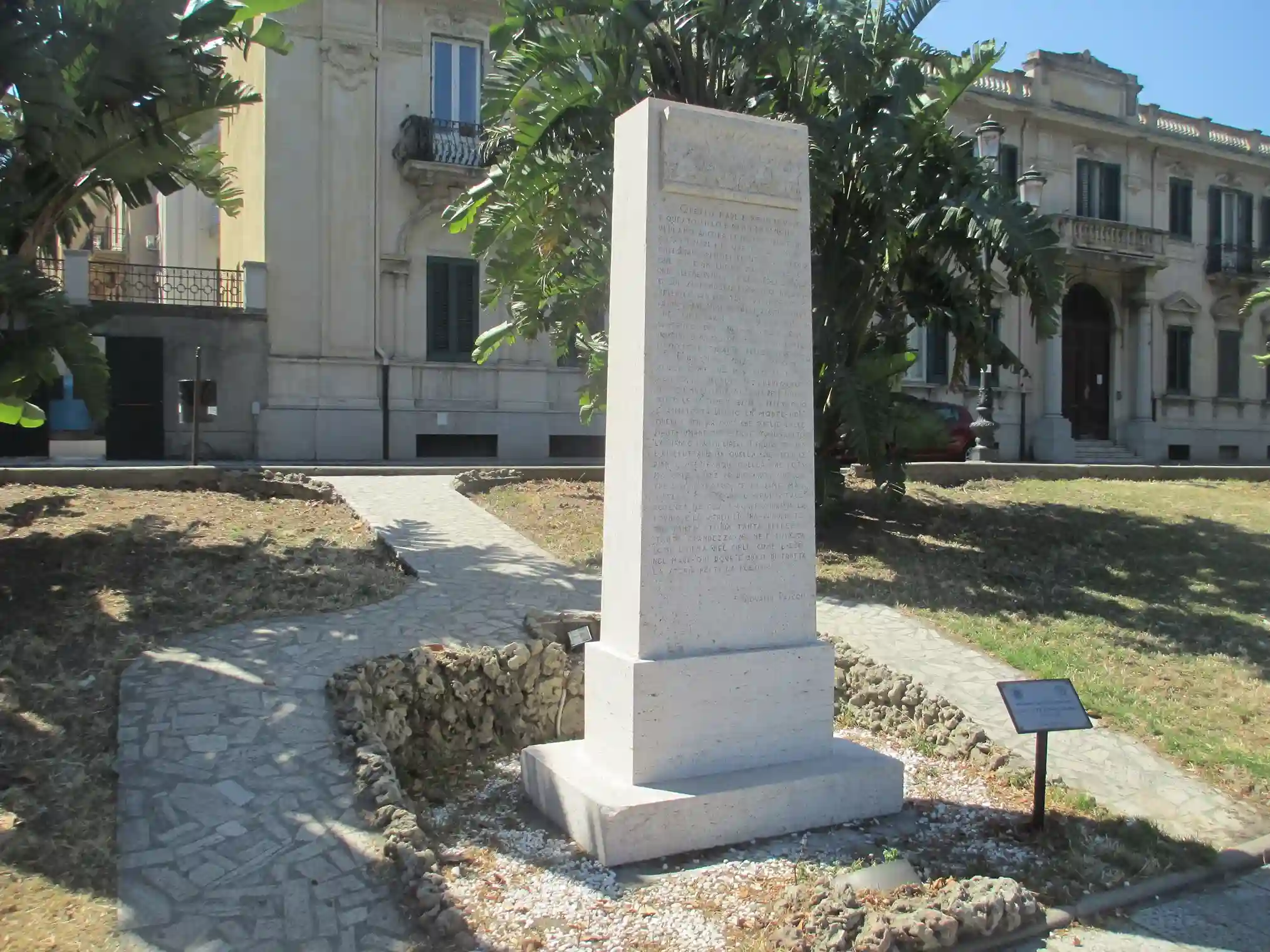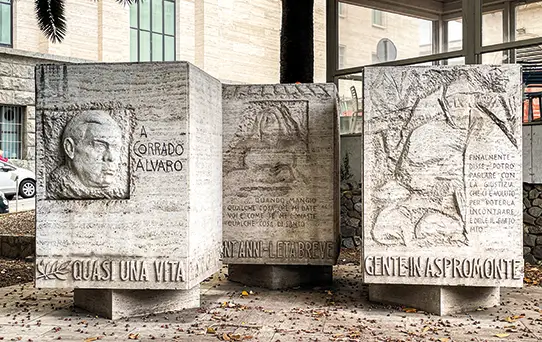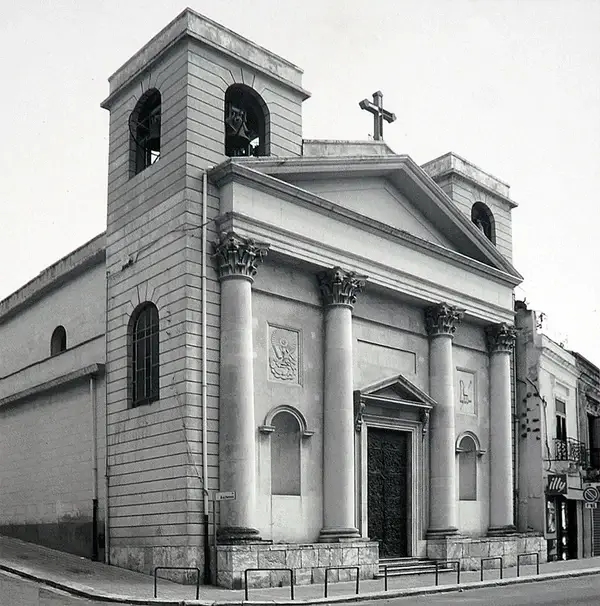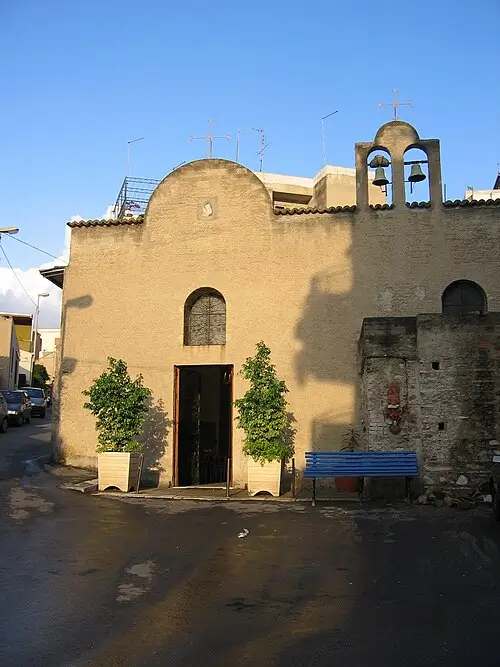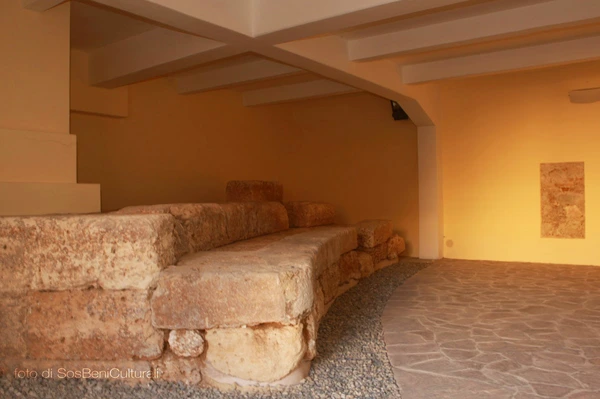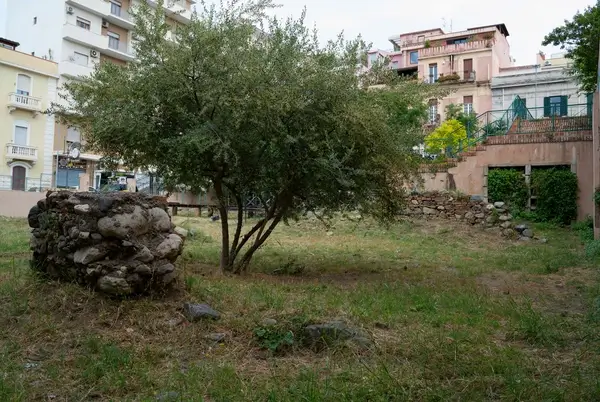Where eternal poetry meets the sea breeze, and marble sings of passion and memory
A Monument to Love and Legacy: Ibycus and the Spirit of Reggio Calabria
On the sun-drenched Lungomare Falcomatà, where the Ionian Sea kisses the city’s edge, a marble stele rises in solemn tribute to one of Magna Graecia’s most passionate voices—Ibycus, the poet of love. This evocative monument, sculpted by Michele Guerrisi, immortalizes a man who turned down power for poetry and whose verses still echo through time.
Born in Reggio Calabria in the 6th century BCE to a noble family, Ibycus chose to forgo political leadership in favor of a life of lyrical exploration. Traveling from Sicily to the court of Polycrates in Samos, he became a central figure among ancient lyricists, joining the ranks of Sappho and Homer in the Alexandrian canon. Renowned for his burning verses on love—so much so that Cicero called him “the most inflamed with love in all of Magna Graecia”—Ibycus remains a symbol of Reggio’s poetic soul.
The stele, carved with the image of a muse playing a lyre, reflects Ibycus’ contributions to art and music. He is credited with inventing the sambuca, a triangular lyre whose melodies once accompanied his impassioned recitals. His poetry, powerful and tender, survives in fragments—yet its intensity remains timeless.
Legend surrounds his death: murdered by thieves, Ibycus allegedly invoked a flock of cranes as witnesses. When one of his killers later mocked, “Look, the avengers of Ibycus!”, justice found them. This tale gave rise to the legal idiom “the cranes of Ibycus”—a symbol of truth revealed.
Plan Your Visit
Stroll along Lungomare Falcomatà and pause before the stele of Ibycus—where the sea, myth, and poetry converge in timeless beauty.
Eat, Drink & Shop
Looking for a place to eat, grab a drink, or do some quick shopping? Find nearby restaurants, and pubs to make your day easier and tastier.
Quick Essentials
Need to grab medicine, withdraw cash, or buy tobacco products in Reggio Calabria? Find nearby supermarkets, pharmacies, and ATMs with one click to keep your day running smoothly.
Explore Nearly Attractions
Just steps from The Stele of Ibycus, uncover more of Reggio Calabria’s gems and hidden treasures
